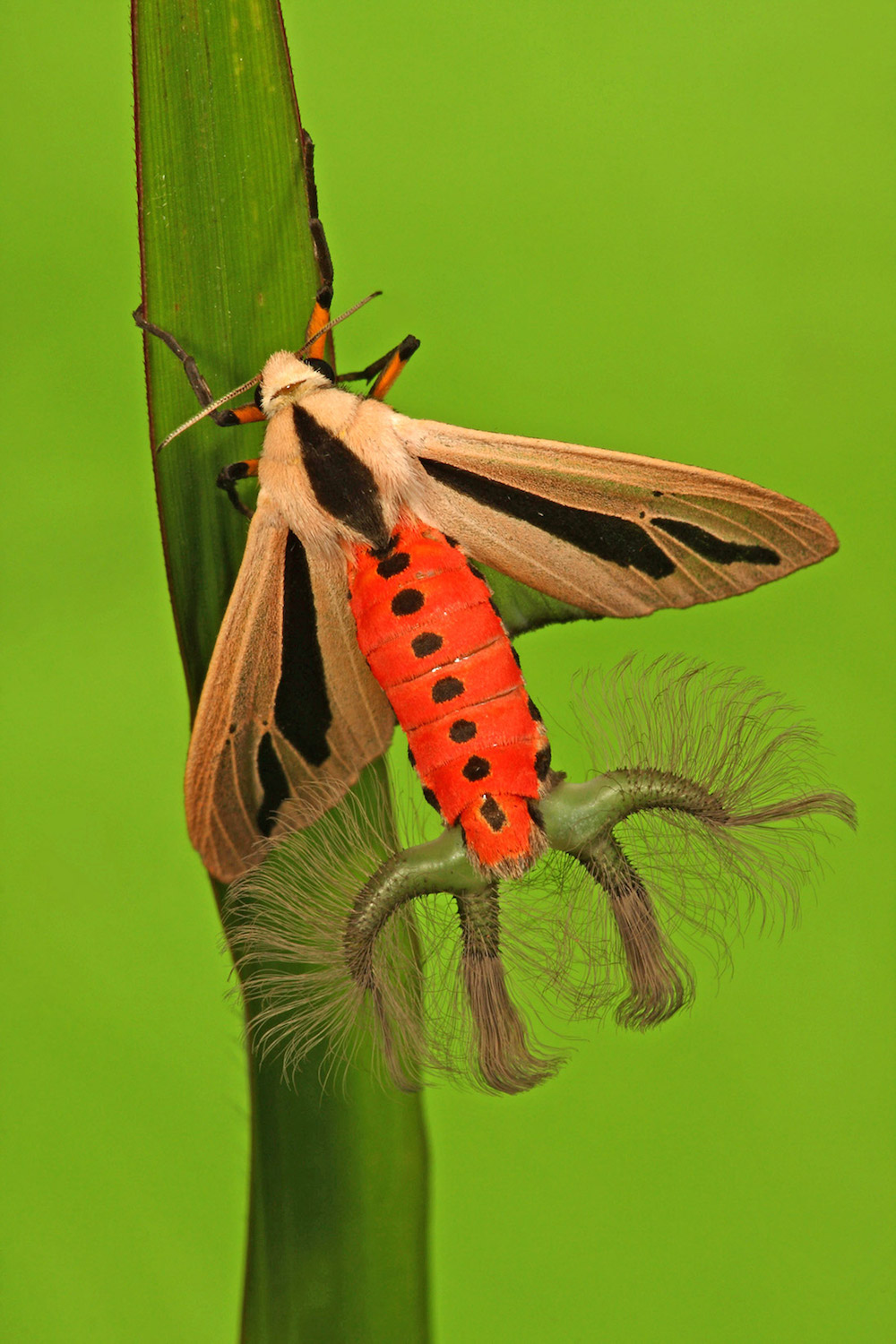What on Earth? Freaky Moth with Hairy 'Butt Appendages' Stuns Facebook
A moth that looks like it crawled out of a shadowy underworld is freaking out Facebook users, including some who are wondering whether the creature in the post is even real.
First, the bad news: It's real. The moth is called Creatonotos gangis, and it lives in parts of Southeast Asia and Australia.
Now, the good news: The moth in the video is likely looking for love. (We admit, this may be good news only for entomologists and other insect-lovers.) [7 Things You Don't Know About Moths, But Should]
On Oct. 19, Facebook user Gandik, from Semarang, Indonesia, posted a photo and video of the weird insect with the caption (translated from Javanese), "If you do not have a butterfly, please." In the video, the moth is rhythmically waving bizarre, hairy appendages that look like a large, gray "X."

These appendages are actually called coremata — organs at the end of a male moth's abdomen that can be everted (that is, turned inside out) to expose tufts of hair, according to Coffs Harbour Butterfly House, in Australia. When they're inflated, as they are in the video, these hairy organs release smelly pheromones in an attempt to woo lady moths.
But while female C. gangis moths may find this scent irresistible, they are likely in the minority. Most farmers can't stand the species because their caterpillars are known to eat crops, including soybeans, rice and maize, according to Coffs Harbour Butterfly House.
Once the C. gangis caterpillars — brown and hairy creatures that have a yellow stripe down their backs — metamorphose into moths, they develop brown forewings and white hindwings. The abdomen is usually red, but in some cases, it's yellow, according to the butterfly house. Their total wingspan is about 1.5 inches (4 centimeters).
Sign up for the Live Science daily newsletter now
Get the world’s most fascinating discoveries delivered straight to your inbox.
C. gangis females lay round, yellow eggs, often on leaves in clusters of 50, so if you don't want any in your neck of the woods, be on the lookout for these little guys. But if you have a soft spot for these arthropods, you can watch them grow up and wave their coremata, just like nature intended.
Original article on Live Science.

Laura is the archaeology and Life's Little Mysteries editor at Live Science. She also reports on general science, including paleontology. Her work has appeared in The New York Times, Scholastic, Popular Science and Spectrum, a site on autism research. She has won multiple awards from the Society of Professional Journalists and the Washington Newspaper Publishers Association for her reporting at a weekly newspaper near Seattle. Laura holds a bachelor's degree in English literature and psychology from Washington University in St. Louis and a master's degree in science writing from NYU.









